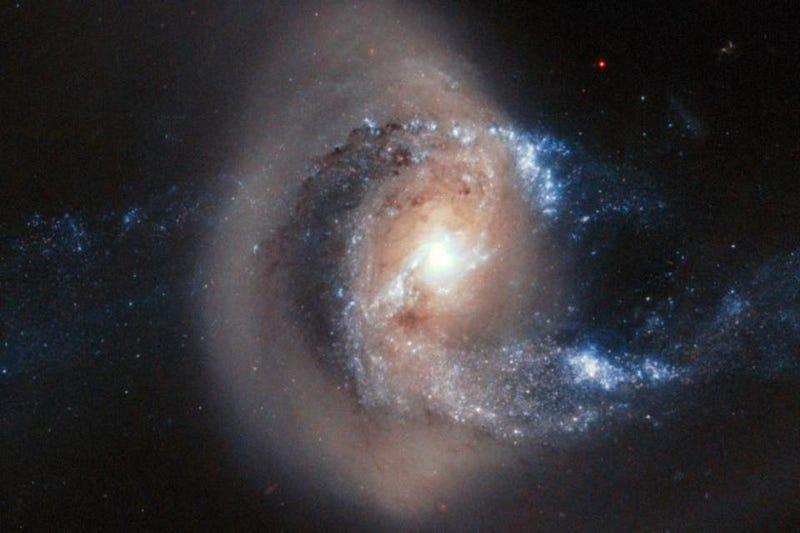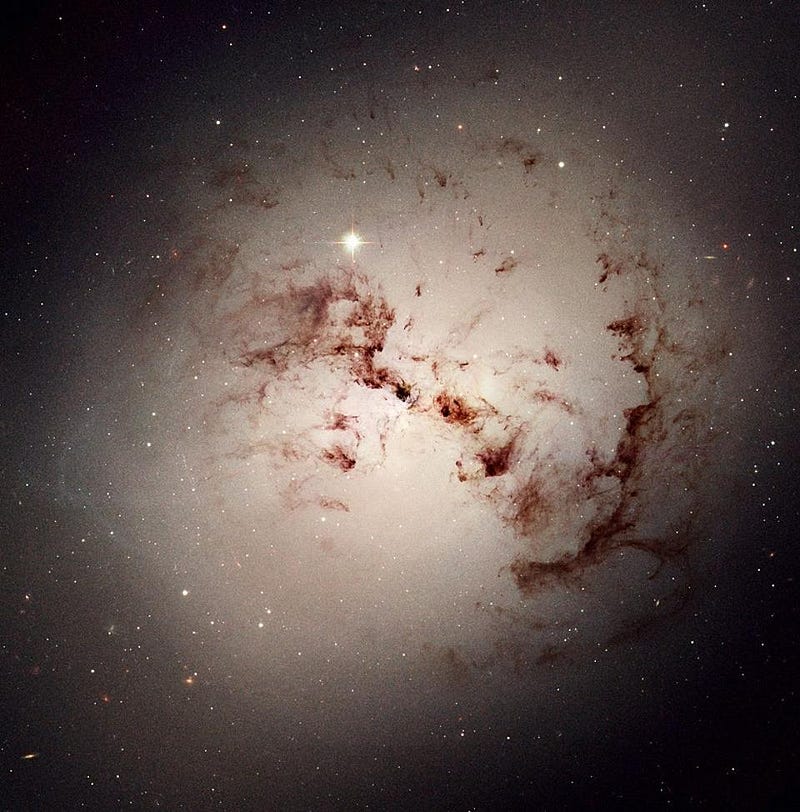What will the death of the Milky Way look like?

Every star must eventually run out of fuel and die… but did you know the galaxy itself will come to an end someday?
“Unless one says goodbye to what one loves, and unless one travels to completely new territories, one can expect merely a long wearing away of oneself and an eventual extinction.” –Jean Dubuffet
On Earth, we’ve got another billion years or two before the oceans boil and the planet becomes uninhabitable. The Sun will heat up, swell into a red giant, fuse helium in its core, then blow off its outer layers and contract into a white dwarf. But new stars will pop up, too, and shine, and keep the galaxy alive and rife with stars far into the future. But even our own Milky Way will cease to exist: first as we know it, and later on, entirely. When enough time passes, there will be no stars, stellar remnants, or even black holes left at all. This is the cosmic story of the ultimate end of our home in space.

The cosmic story of our galaxy’s demise starts right here, today. We need to look close to home, at our own Milky Way and its surroundings. While we tend to think of the local group — our cosmic neighborhood — as being made up of ourselves, Andromeda (our big sister), and a bunch of nobodies, it’s high time we recognize the rest of what’s around us. But they’re as much a part of our future as we are. So get to know…

#3: the Triangulum galaxy. At around 5% of the Milky Way’s mass, this is the third largest galaxy in the local group. It has a spiral structure, its own satellites, and may itself be a satellite of the Andromeda galaxy.

#4: the Large Magellanic Cloud. This galaxy is only 1% of the Milky Way’s mass, but is the fourth largest in the local group. It’s very close to our Milky Way — less than 200,000 light years away — and is undergoing a burst of star formation, as our galaxy’s tidal interactions are causing gas to collapse, giving rise to some of the newest, hottest and largest stars in the Universe.

#5–7: the Small Magellanic Cloud, NGC 3190 and NGC 6822. All between 0.1% and 0.6% of the Milky Way’s mass (it’s uncertain which one is largest), these three are substantial galaxies in their own right as well, with over a billion solar masses’ worth of material in each one.

#8 & 9: Elliptical galaxies M32 and M110. These might “only” be satellites of Andromeda, but these ellipticals have over a billion stars inside each, and may yet be more massive than some of the galaxies numbered 5, 6 and 7 above.
And beyond that, there are at least 45 other known galaxies — smaller galaxies — making up our local group. Every one of them has a dark matter halo surrounding them; every one is gravitationally bound together within perhaps 3 million light years of one another. Despite their sheer numbers, their masses and their magnitudes, not one of them will exist the way they are right now another few billion years into the future.

As time goes on, galaxies gravitationally interact. This not only pulls them together by the gravitational attraction you picture normally, but there are also tidal interactions. We normally think about tides as something the Moon creates by pulling on the Earth’s oceans, causing a bulge in one direction that gives us “high tide” when the Earth rotates through the bulge and “low tide” when we rotate through the trough, which is true enough. But from a galaxy’s point of view, tides are a little more subtle. The portion of a small galaxy that’s closer to a larger one will be attracted with a greater gravitational force, while the portion that’s farther away will experience a lesser attractive force. As a result, small galaxies get stretched and eventually torn apart by their interactions with larger ones.

The small galaxies that are a part of our local group, including both Magellanic clouds and all the dwarf ellipticals, will be torn apart in exactly this fashion, and their matter will be incorporated into the larger galaxies they merge with. “So what,” you say. That’s not a true death, because the big, Milky Way-like galaxies still survive. But even we won’t live forever in our current state. About 4 billion years in the future, the mutual gravitational attraction of the Milky Way and Andromeda will pull us into a gravitational dance with one another, leading to a major merger. Although the entire process will take billions of years to complete, the spiral structure of both galaxies will be destroyed, resulting in the creation of a single, giant elliptical galaxy at the core of our local group: Milkdromeda.
A small percentage of stars will be ejected during such a merger, but most will remain unscathed, with a big burst of star formation occurring in the process. Eventually, the other galaxies within our local group will be sucked in as well, leaving just a single, giant galaxy made up of the cannibalized remains of all the others. This process will happen, eventually, in all the bound groups and clusters of galaxies throughout the Universe, while dark energy drives all the individual groups and clusters apart from one another. But again, that’s not a true death, because there’s still a galaxy present. At least, for the time being, that’s the truth. But the galaxy is made up of stars, gas and dust, and there’s a finite amount of all of them.

Across the Universe, galactic mergers will take tens of billions of years to complete. Over those same timescales, dark energy will drive them apart and across the Universe towards invisibility and inaccessibility. While the last galaxies beyond our local group will not disappear until we’ve reached timescales of hundreds of billions of years, the stars within them all will live on. The longest-lived stars in existence today will continue to burn their fuel for more than ten trillion years, and from the gas, dust and stellar corpses littering each galaxy, new stars will be born — albeit in smaller and smaller numbers and less frequently — throughout that time.

Even when the last star burns out, the stellar remnants — white dwarfs and neutron stars — will continue to shine for hundreds of trillions or even quadrillions of years before going dark. When that inevitability happens, we’ll still have brown dwarfs, or failed stars, merging together occasionally, reigniting nuclear fusion and creating starlight for tens of trillions of years at a time.

When that last star burns out, though, tens of quadrillions of years (some ~10¹⁶ of them) in the future, the mass in the galaxy will still be present. Even that cannot be considered a “true death” in some senses.

Even without light, the galaxy itself will not last forever! All of these masses are gravitationally interacting with one another, and gravitational objects of different masses have a strange property when they interact:
- The repeated “passes” and close encounters cause exchanges of velocity and momentum between them.
- The lower-mass objects get kicked out of the galaxy, while the higher-mass objects sink towards the center, losing velocity in a process known as violent relaxation.
- Over long enough timescales (~10¹⁹ to 10²⁰ years), most of the mass of the galaxy will have been ejected, with only a small percentage of the remaining masses more tightly bound.

At the very center of this galactic remnant will be the supermassive black hole at the center of each one, while the remaining “galactic” objects orbit in a large version of our own Solar System. This structure will, of course, be the last and final thing to go, as the black hole will get as large as it can from eating as many objects as it can get its hands on. At the center of Milkdromeda, we’ll likely find an object a hundred million times as massive as our Sun is today; larger groups and clusters might have black holes exceeding ten billion solar masses or even higher!
Yet even these won’t live forever.

Thanks to the phenomenon of Hawking radiation, even these objects will decay away. It will take somewhere between 10⁸⁰ and 10¹⁰⁰ years, depending on how massive our supermassive black hole becomes through growth, but even this, too, will go away. When it does, the remnants orbiting the galactic center will at last become unbound, leaving only a halo of dark matter behind, which itself may dissociate, depending on what dark matter’s properties are. With no matter left inside, what was once our mighty Local Group, formed from our Milky Way and many other galaxies, will at last be no more.
Ethan Siegel is the author of Beyond the Galaxy and Treknology. You can pre-order his third book, currently in development: the Encyclopaedia Cosmologica.





